Why Is Food Safety Important In Healthcare? Healthcare Leaders Guide
Learn challenges healthcare foodservice teams face today and key food safety practices to protect vulnerable patients. Get a free healthcare leader...
Food preparation combines simple and complex operations that help make food safe and delicious for customers.
The majority of operations in a food service business involve food preparation. This term refers to several different operations that help create safe and satisfactory dishes.
In the food industry, food preparation is performed by skilled professionals who follow strict guidelines and best practices to ensure food is prepared and served safely and efficiently. Food handlers are required to have sufficient knowledge of proper food preparation and related food safety requirements.
WHAT WE'LL COVER:
The food preparation definition refers to a complex combination of various methods involving food handling, cleaning, cooking, and preserving to make the food edible and safe. Food preparation is essential for food businesses as it will determine the quality and safety of the perishable food dishes.
Different food preparation operations involve various techniques, methods, and simple actions that help achieve consumable and safe food. The applicable operations in a food business may vary depending on the nature of the establishment, the culture of the location, and the traditions of the society.
Food preparation techniques help food handlers achieve particular food characteristics, such as a dish's flavor, texture, and appearance. In addition, preparation ensures that the dish is prepared hygienically and safely.
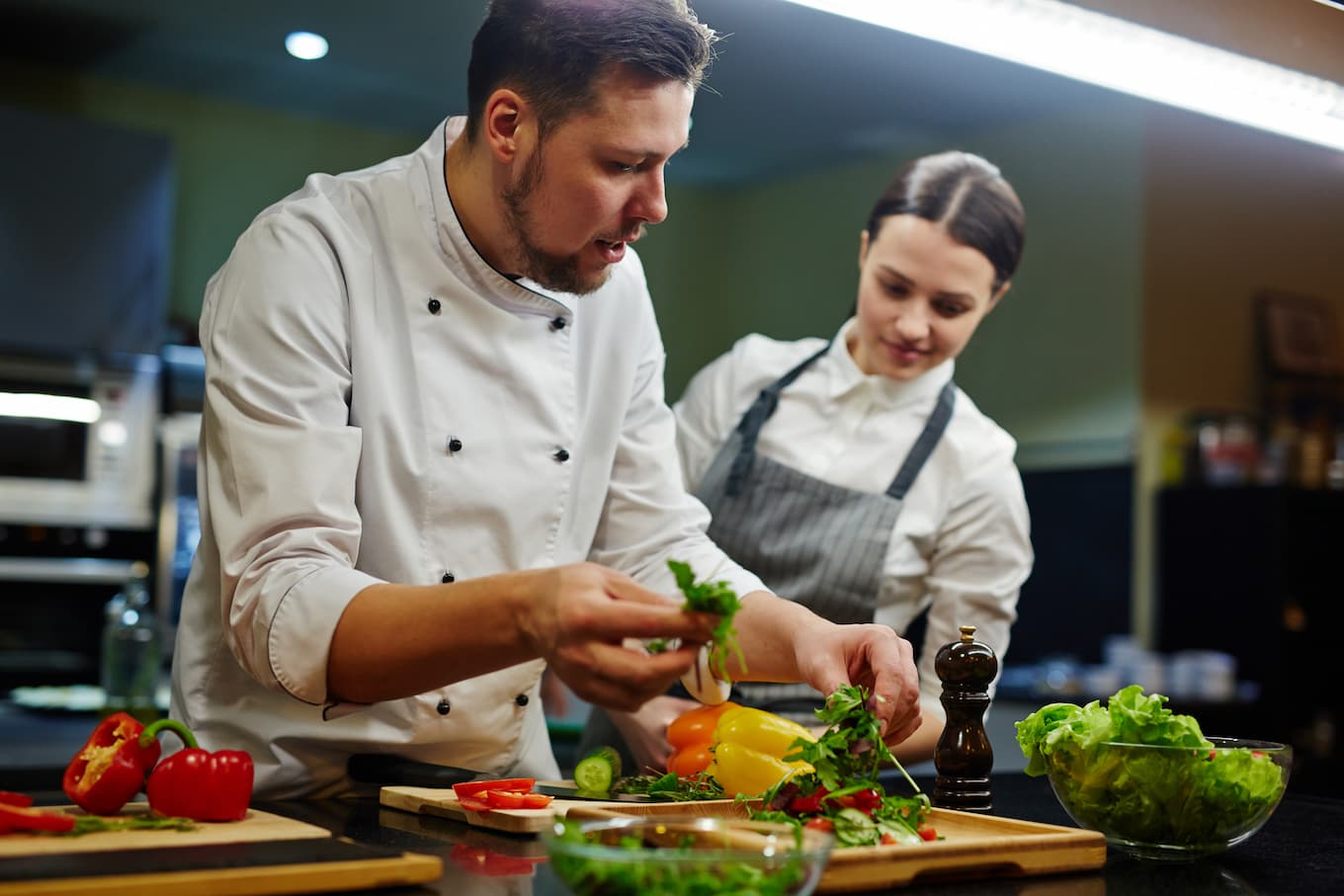
There are many food preparation techniques available in the food production industry. They range from simple techniques, such as handwashing, to highly technical ones, like sous vide techniques. Food preparation methods help make foods edible, safe, and pleasing to the eyes of customers.
Each method has its unique benefits and challenges. Some of the most common methods of food preparation include:
This method involves cooking food in boiling water or other liquid ingredients. It is a versatile technique that can be used to prepare other ingredients, such as pasta, before incorporating them into another dish. Boiling requires the liquid mixture to reach at least 212°F (100°C) for boiling water.
At boiling temperatures, most foodborne pathogens will not be able to survive. Once the internal temperature of the boiled food reaches an equal temperature with the liquid, the food is then cooked safely.
Grilling involves the use of an open flame or ignited coal on a special plate where the food is laid down. This technique is often used in steaks and burger patties and gives a distinctly smokey taste and grill marks characteristic of grilled foods.
Grilling is a technique that uses very high heat. As such, there is a tendency to cook the external portion of the food first, making it harder to reach the desired internal temperature. Caution must be practiced to achieve food safety during grilling.
In addition, grilling requires a thorough cleaning of the grill equipment as it may cause cross-contamination in certain cases.
This method involves cooking a range of foods with high heat inside an oven until the dish is cooked through. The process of roasting is similar to baking. The difference is that roasting is used for cooking food initially with a solid structure. Baking is the term used when preparing dishes without a solid structure like dough.
Roasting requires proper temperature guidance using an oven-compatible appliance thermometer. The food thermometer can be inserted into the food while it is being cooked or occasionally used to check the internal temperature. Roasting involves cooking different types of food in one pan. As such, it is important to consider the internal temperature of each ingredient.
Frying is a method of cooking that uses oil or fat to remove the moisture of foods. This technique uses a pan or a deep pan for deep frying food to submerge the ingredient in hot oil. In frying, the outer layer of the food can immediately get cooked. This is called case hardening. As such, frying foods require close regulation of the heat source.
Frying is a very effective way to kill pathogenic microorganisms. Despite this, maintaining a high temperature for frying is easily affected by many factors. When frying foods, make sure not to overcrowd the pan as this will cause the temperature of the oil to drop suddenly.
Steaming is a form of cooking food that uses vaporized hot water. Although the steam used in this method has a very high temperature, steaming is rather a gentle process of cooking foods.
To ensure food safety during steaming, the cooking water used in the process must also be free of any kind of contamination. In addition, it is ideal to use soft water for steaming to avoid scaling the food equipment in a restaurant kitchen.
There are more food preparation and basic cooking techniques besides those listed in this section. Other techniques are used for preparing essential ingredients before they are subjected to cooking.
In addition to these food preparation methods, it's crucial to follow food safety practices throughout the cooking process, such as washing hands and kitchen surfaces frequently, using clean utensils and equipment, and storing food at safe temperatures. By taking these steps, you can help to ensure that your food is both delicious and safe to eat.
Food preparation techniques involve different methods for transforming raw food ingredients into acceptable, delicious, and safe dishes. The term food preparation involves operations such as slicing, peeling, sanitizing surfaces, marinating, and cooking.
Food businesses use food preparation techniques as core operations. Food handlers are trained in properly executing these techniques to fulfill company and regulatory standards. Food preparation requires different basic cooking skills, expertise, equipment, and tools.
Below, we discuss the common food preparation methods and equipment used in food businesses.
Food preparation methods can be divided into several different categories. Under each category, different preparation methods can be used to produce a particular desired output. The extensiveness of food preparation categories may depend on the size of a food business.
Here are some common steps of food preparation under major food preparation categories:
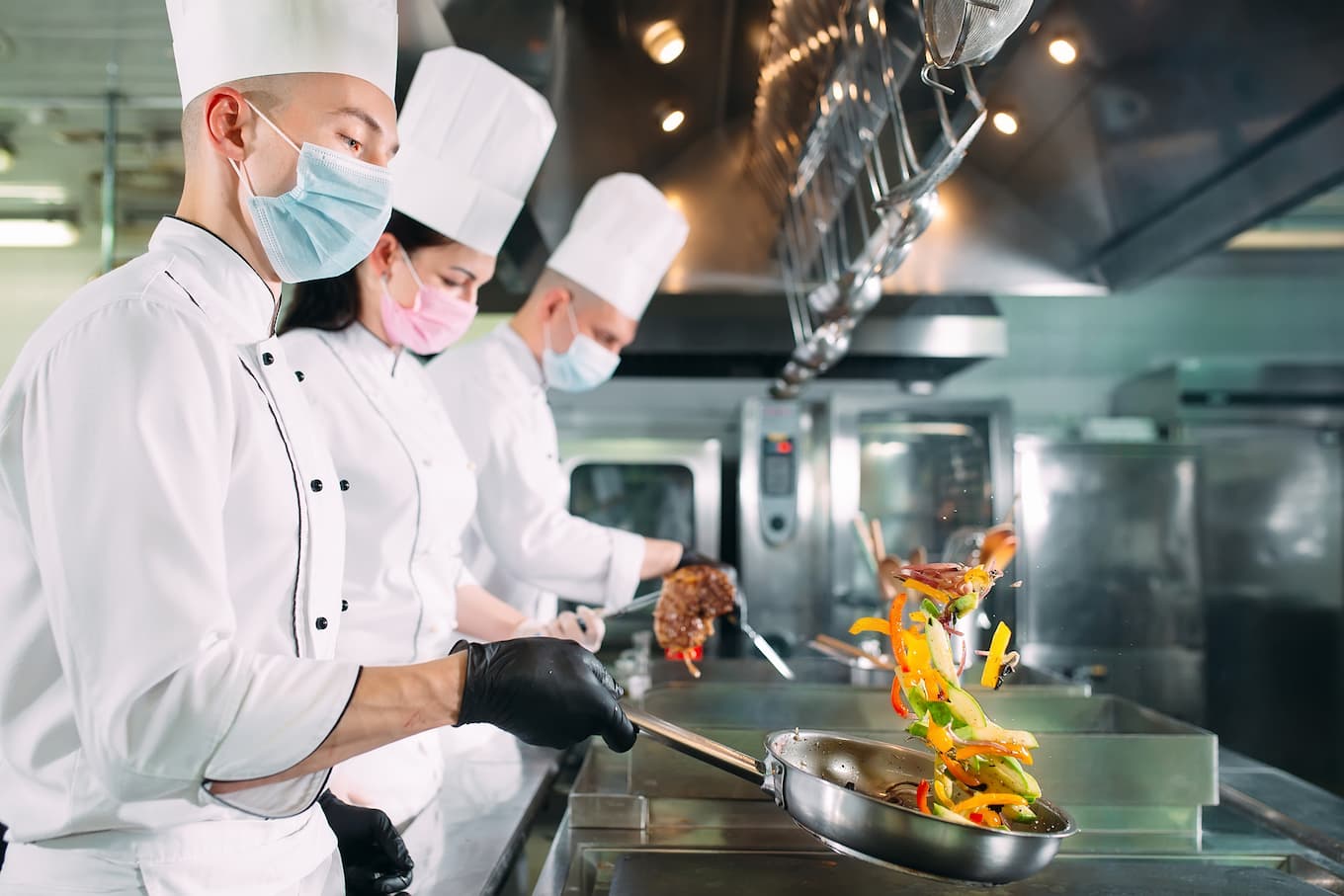
The mentioned food preparation tasks are just some of the common ones performed in every food business. There are no strict categorization rules for food preparation tasks, and they can be more extensive in some cases.
Each stage includes various activities that are important to ensure the safety, food quality, and flavor of the final dish. Properly selecting and cleaning ingredients, measuring and mixing ingredients, cooking to the appropriate temperature and time, and safely storing leftovers are all crucial steps in the food preparation process.
Food preparation involves a lot of different pieces of equipment. When it comes to running a food establishment, the right equipment can help you make the tasks easier and more efficient.
Here are some basic food preparation equipment essential for every food business:
Mixing Equipment:
Cutting Equipment:
Cooking Equipment:
Refrigeration Equipment:
Baking Equipment:
Miscellaneous Equipment:
It is important for all food businesses to keep a detailed list of these pieces of equipment and regularly schedule maintenance. This can also help your kitchen team ensure that every piece of equipment is properly maintained and sanitized to avoid potentially contaminating the food being prepared.
Use our smart Food Safety Management System to get digital monitoring logs and checklists that you can use to ensure proper maintenance of your equipment. Using artificial intelligence, our software can automatically generate an Equipment Maintenance Log, Master Sanitation Schedule, and other essential monitoring logs and checklists for your team.
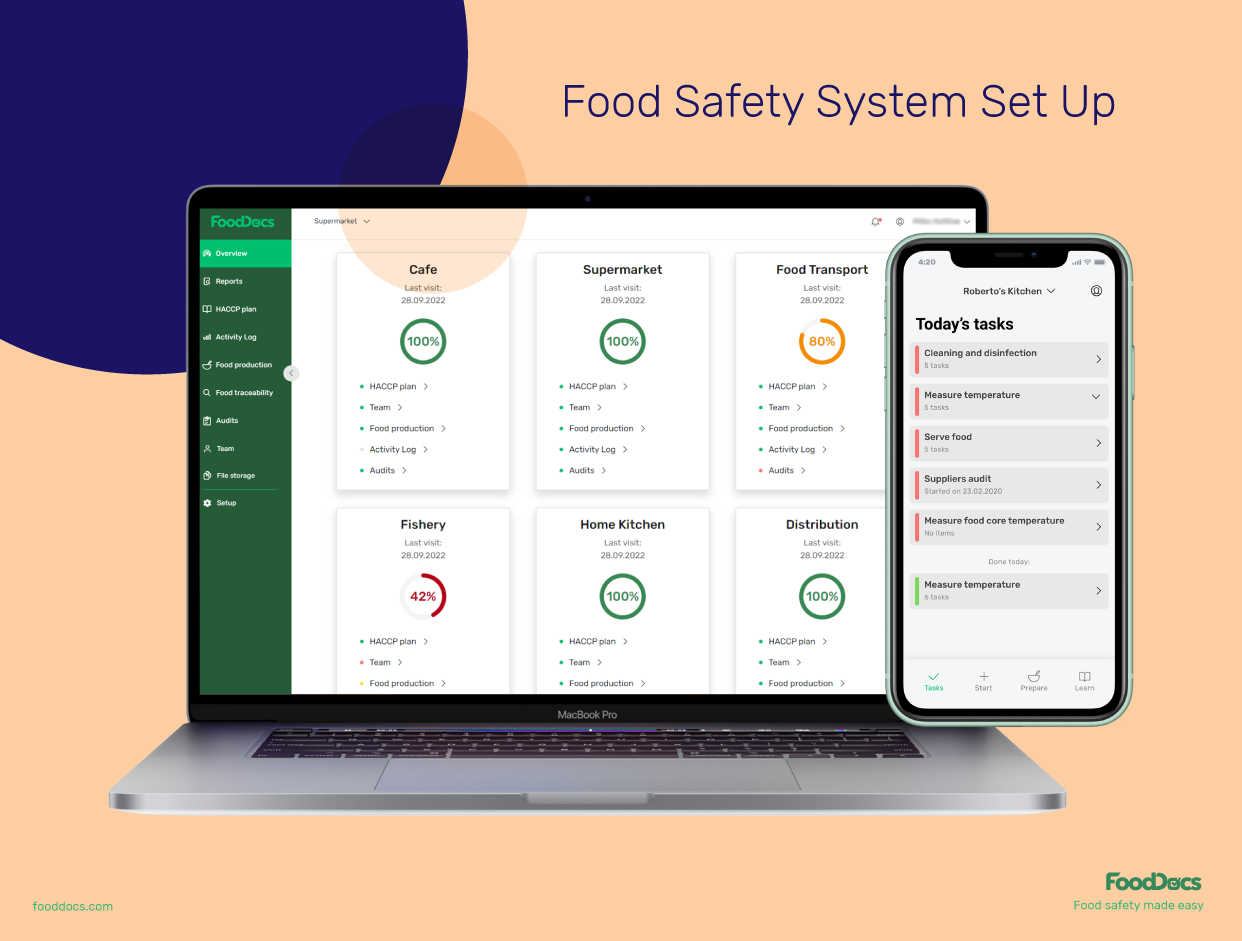
Food Safety System Set up by FoodDocs
The food industry uses several different terminologies that are sometimes exclusive to food businesses. Understanding these terms can help food employees efficiently work in a food business setup.
Here are some common food preparation terms that can come in handy for food preparation workers:
Chop. To cut food into small, irregular pieces.
Dice. To cut food into small, uniform cubes.
Mince. To finely chop food into very small pieces.
Julienne. To cut food into thin, matchstick-like strips.
Grate. To rub food against a grater to create small, thin pieces.
Whisk. Beat ingredients together with a fork or whisk to incorporate air and create a smooth mixture.
Fold. To gently mix ingredients together without stirring or beating, typically used to incorporate delicate ingredients.
Simmer. To cook food in liquid at a temperature just below boiling, typically used to cook foods like soups and stews.
Boil. To cook food in liquid at a temperature at or above the boiling point, typically used to cook foods like pasta and vegetables.
Bake. To cook food in an oven using dry heat, typically used to cook foods like bread and pastries.
Roast. To cook food in an oven using dry heat, typically used to cook meats and vegetables.
Sauté. To cook food in a small amount of fat over high heat, typically used to cook foods like vegetables and meats.
Season. To add flavor to food with salt, pepper, herbs, and spices.
Garnish. To decorate a dish with additional ingredients, typically used to add color and flavor.
Check out our similar list of Food Safety Terms that we made to guide food handlers on the common terminologies used in the food industry.
Orienting food handlers on these simple terms is part of food safety training. Understanding these food safety terminologies is crucial for ensuring the safety and quality of the food products being prepared and served to customers.
To create a delicious and well-executed meal, there are specific techniques, measurements, and terminology that must be understood and implemented.
In this sense, understanding food preparation terms is crucial to any food handler.
When food handlers have a deep understanding of food preparation terms, they can easily address food safety concerns and work more efficiently.
Food safety is a critical part of any food preparation task. This aspect of preparation must always be present to ensure that public health is safe from potential foodborne illnesses.
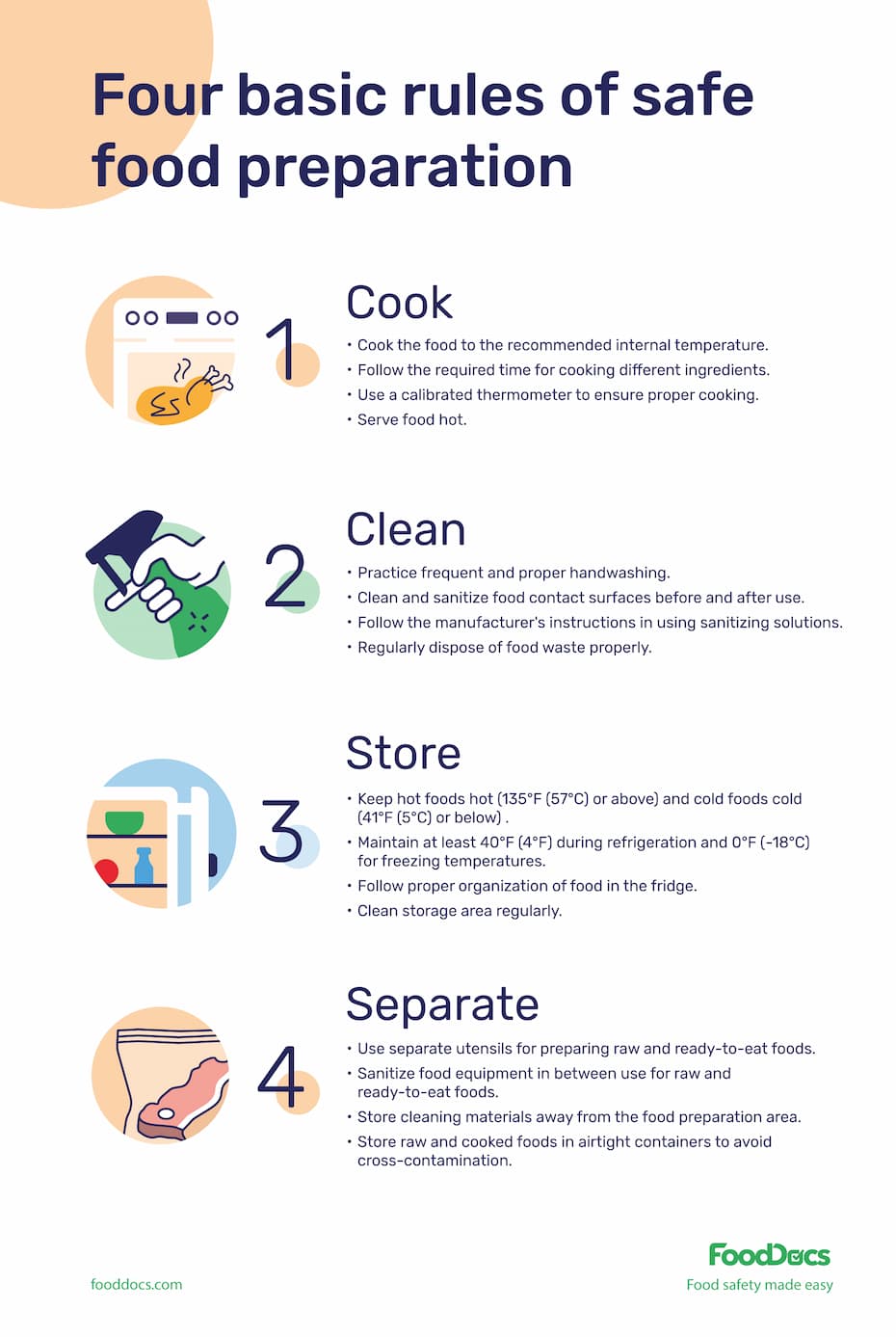

Thank you for downloading Food product specification sheet!
Want to get a customizable HACCP template?
Or set up your food safety system in 15 minutes?
Following strict food safety guidelines can help save your business from issues that may damage your reputation. Below, we explore the four basic rules of safe food preparation, common food preparation equipment, and essential food preparation terminologies for ensuring safe and healthy food practices.
These four main rules summarize the most complicated guidelines for food safety during food preparation. By following these rules, your food safety team can ensure that the dishes you serve are always safe and free of any potential food contamination.
Ensure that your team follows and implements these major rules of food safety using our intuitive Food Safety Management System.
The most effective food preparation step that destroys bacteria is cooking. Any form of cooking, whether through the application of heat or very low temperature, can effectively kill pathogenic bacteria.
The temperature required to destroy bacteria varies depending on the type of food being cooked, but in general, the safe cooking temperature for most types of food is 165°F (74°C). This temperature kills harmful bacteria such as the big 6 foodborne illness-causing pathogens.
The best way to reduce bacteria to safe levels when preparing vegetables is to practice proper food hygiene. This aspect of food safety includes simple practices, such as handwashing before and after handling vegetables, using separate utensils for cutting vegetables, sanitizing food contact surfaces, and cooking vegetables thoroughly.
Simple food hygiene operations can significantly decrease the risk of foodborne illnesses. According to the Centers for Disease Control and Prevention, handwashing:
During hot holding, the cooked vegetables must be held at a temperature of 135°F (57°C) or above until served. This temperature range will help keep bacteria at safe levels.
Food preparation methods involve a wide range of operations. Each operation requires close monitoring to ensure that they are done correctly and on time. With this much work at hand, the effectiveness and efficiency of a food safety manager can decline, and as a result, there may be no more time to improve the business.
What you need is an intuitive solution that can help you remember and monitor important food preparation tasks all the time. Your best bet is to use FoodDocs' Food Safety Management System.
Powered by artificial intelligence and a machine-learning program, our software can automatically generate essential food safety monitoring documents for you in just 15 minutes.
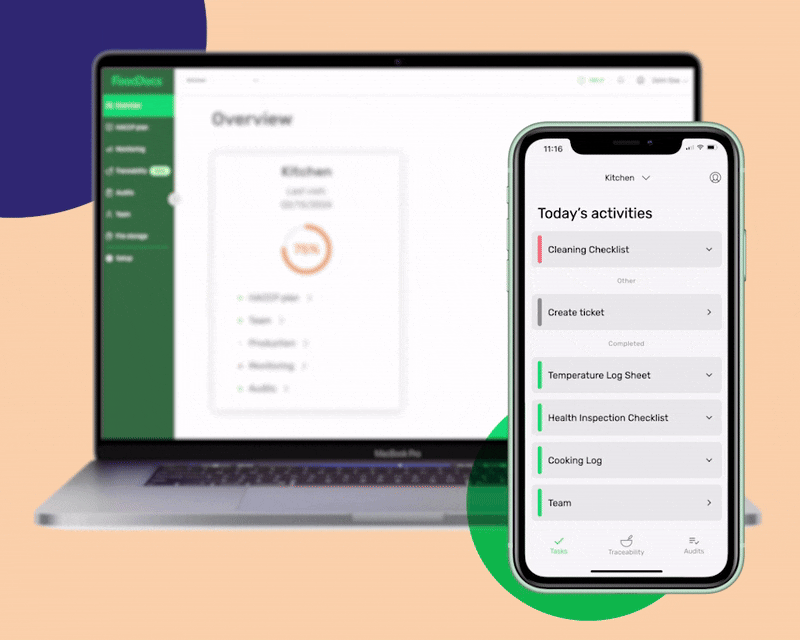
Our smart solutions can provide your food safety team with the following benefits:
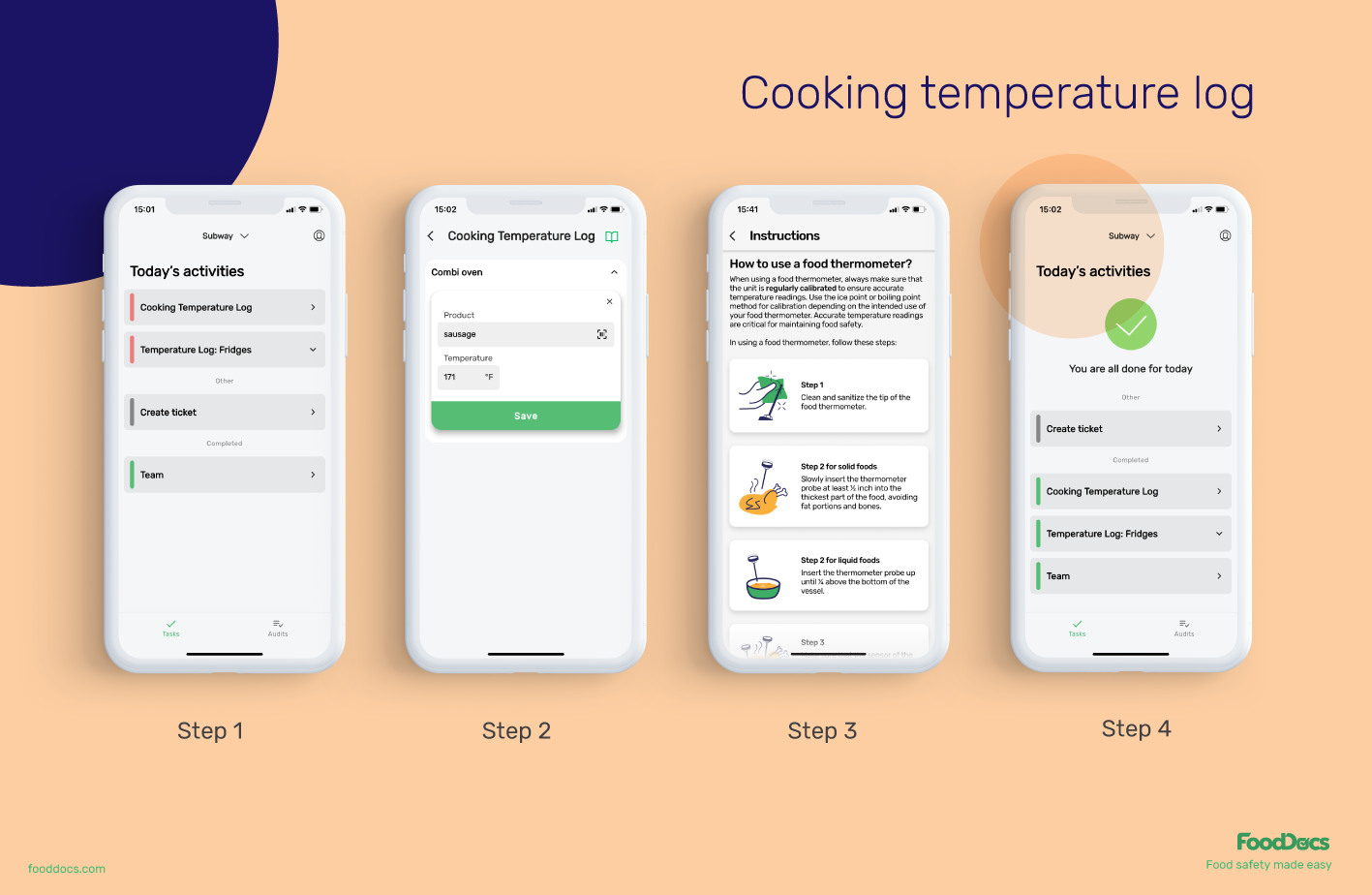
Cooking temperature log from FoodDocs
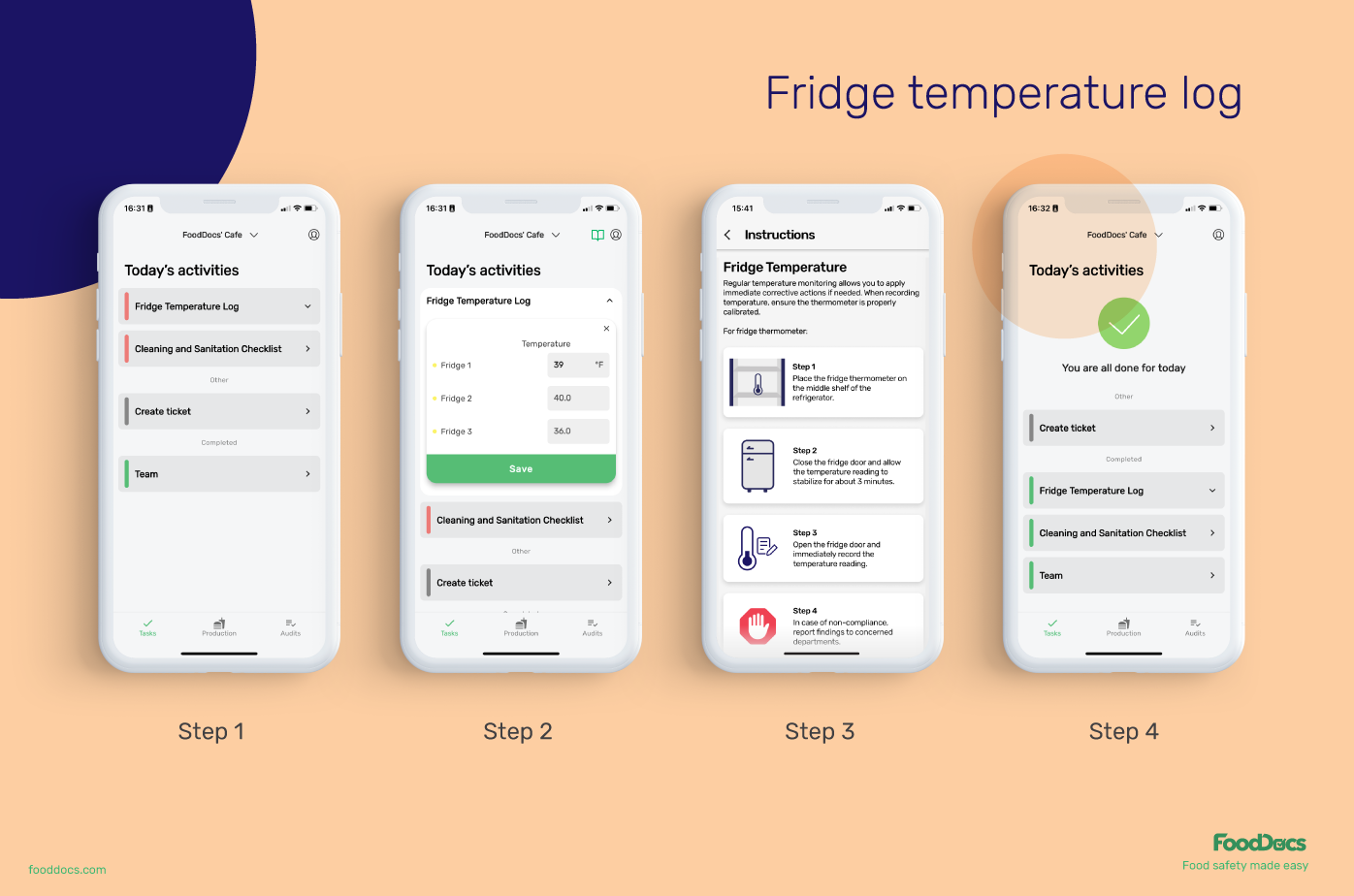
Fridge temperature log from FoodDocs
In addition to features for food preparation personnel, our smart software also provides systems that can help improve management efficiency.
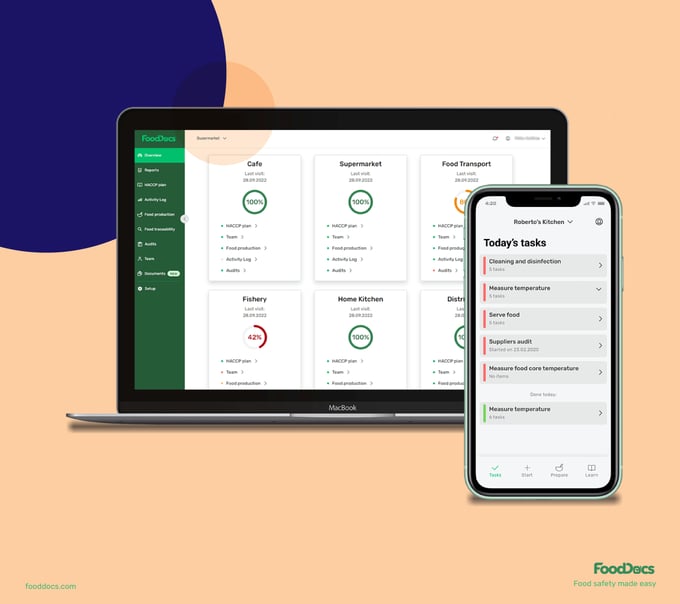
Real-time overview from FoodDocs
Monitoring food preparation is an everyday task for a food business team. Every day, all preparations must be properly done to ensure compliance and customer satisfaction.
Using our smart software, you can ensure food safety compliance with the help of technology. You can even further customize and personalize all digital monitoring logs that our system generates.
Experience first-hand how our system can help you improve food preparation and safety compliance efficiency. Use our free 14-day trial today.
Do you have more questions about food preparation? We prepared a list of the most frequently asked questions about this topic and answered them for you.
Yes, it is safe to handle food that requires no additional preparation before service, especially if you are using clean and sanitized utensils for handling the food.
Common food preparation examples include washing and peeling vegetables, cutting meat or poultry, marinating food, mixing ingredients, baking or cooking food, and storing leftovers properly.
The four major steps for healthful food preparation are 1) cleaning food contact surfaces, 2) separating raw from cooked foods, 3) cooking foods thoroughly, and 4) storing foods in proper keeping temperatures.
A food handler is allowed to prepare food while wearing a clean and properly fitted and clean apron.
The best way to prevent cross-contamination, in this case, is to use new, sanitized knives and separate cutting boards.
In cases of shallow cuts, a food employee must quickly clean and cover the wound with a bandage. An employee with an open wound must not be allowed to work near food unless provided with a glove.
Learn challenges healthcare foodservice teams face today and key food safety practices to protect vulnerable patients. Get a free healthcare leader...
Learn what Standard Operating Procedures (SOPs) are and how to write effective SOPs that ensure consistency, efficiency, and safety in your...
Boost your retail food safety with essential practices and digital tools to protect customers and your brand. Plus a free Retail Food Safety Leader...